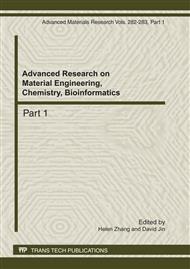p.195
p.203
p.209
p.213
p.218
p.222
p.227
p.231
p.236
On the Measures of Separation of a Fuzzy Clustering
Abstract:
This paper tested the measures of separation of a fuzzy clustering. Over the same labeled data, Fuzzy k-Means clustering algorithm generates the first fuzzy clustering, then the proposed revision function in (6) revises it several times to generate various fuzzy partitions with different pattern recognition rates computed by (5), finally the measures of separation measure the separation of each fuzzy clustering. Experimental results on real data show that the measures of separation in literatures fail to measure the separation of a fuzzy clustering in some cases, for they argue that the fuzzy clustering with higher pattern recognition rate is less separate between clusters and worse than that with lower pattern recognition rate.
Info:
Periodical:
Pages:
218-221
Citation:
Online since:
July 2011
Authors:
Price:
Сopyright:
© 2011 Trans Tech Publications Ltd. All Rights Reserved
Share:
Citation:


